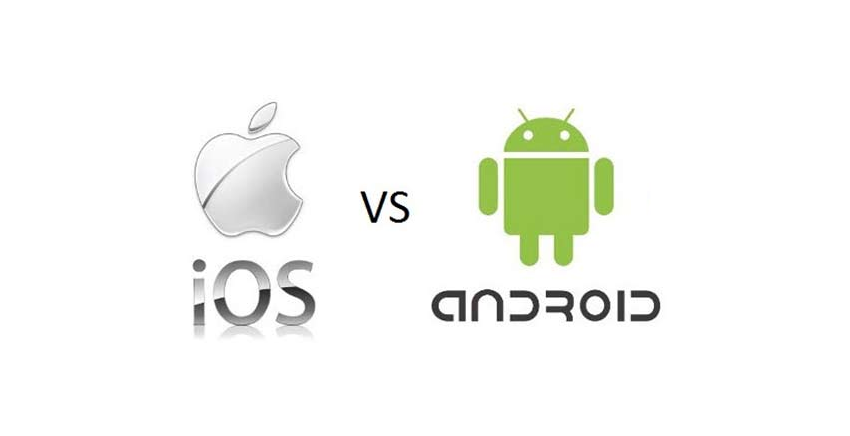The mobile operating system landscape has seen significant changes since the early days of smartphones. Two of the most prominent players in this field are Apple’s iOS and Google’s Android. Each has evolved uniquely, shaping the way we use mobile devices. This article explores the evolution of iOS and Android, comparing their development milestones, features, and market impacts.
1. Early Beginnings
A. iOS: The Birth of iPhone OS
- 2007: Apple’s iOS was introduced with the launch of the iPhone. Initially named iPhone OS, it was designed specifically for the iPhone’s touch interface.
- Key Features: The original iOS featured a revolutionary touchscreen interface, the App Store, and seamless integration with Apple’s ecosystem.
B. Android: Open-Source Revolution
- 2008: Android, developed by Google and the Open Handset Alliance, made its debut with the HTC Dream (T-Mobile G1).
- Key Features: Android’s open-source nature allowed manufacturers to customize the OS, leading to a wide range of devices and features.
2. Major Milestones and Updates
A. iOS Evolution

- iOS 2 (2008): Introduction of the App Store, allowing third-party applications.
- iOS 4 (2010): Multitasking, FaceTime, and the introduction of the iPad.
- iOS 7 (2013): Significant design overhaul with a flatter UI and new features like Control Center.
- iOS 11 (2017): Introduction of the Files app, improved Siri, and augmented reality capabilities.
- iOS 14 (2020): Widgets on the Home Screen, App Library, and enhanced privacy features.
B. Android Evolution
- Android 1.0 (2008): Initial release with basic features and Google services integration.
- Android 2.0/2.1 (Eclair) (2009): Support for multiple accounts, improved Google Maps, and better UI.
- Android 4.0 (Ice Cream Sandwich) (2011): Major UI overhaul, introduced Android Beam and face unlock.
- Android 6.0 (Marshmallow) (2015): Introduced Doze mode for better battery management and app permissions.
- Android 10 (2019): Dark mode, gesture navigation, and enhanced privacy controls.
3. User Interface and Experience
A. iOS
- Design Philosophy: Consistent, minimalist design with a focus on simplicity and ease of use.
- Updates: Frequent, regular updates that are available to all supported devices simultaneously.
- Customization: Limited compared to Android, with a focus on uniformity across the user experience.
B. Android
- Design Philosophy: Flexibility and customization with a focus on user control and personalization.
- Updates: Updates vary by device manufacturer and carrier, leading to fragmented experiences.
- Customization: Extensive options for customizing the home screen, widgets, and overall user experience.
4. App Ecosystem and Market
A. iOS
- App Store: Curated and controlled by Apple, known for high-quality apps and strict review processes.
- Revenue: Historically, iOS users have been shown to spend more on apps and in-app purchases.
B. Android
- Google Play Store: Open ecosystem with a broader range of apps, including more free options.
- Market Share: Android holds a larger global market share due to its presence on a wide variety of devices.
5. Security and Privacy
A. iOS
- Security: Closed ecosystem with frequent updates and stringent app review processes contribute to high security.
- Privacy: Strong privacy features, including App Tracking Transparency and privacy labels on the App Store.
B. Android
- Security: Open ecosystem can lead to vulnerabilities, though Google has made strides with regular security updates and Google Play Protect.
- Privacy: Recent updates have improved privacy features, but user experience can vary based on device manufacturer.
6. Market Trends and Future Directions
A. iOS
- Focus Areas: Continued emphasis on ecosystem integration, privacy, and performance improvements.
- Future Trends: Increased use of augmented reality, machine learning, and enhanced health tracking features.
B. Android
- Focus Areas: Greater focus on flexibility, customization, and integration with a wide range of hardware.
- Future Trends: Advancements in AI, 5G connectivity, and further customization options.
Conclusion
The evolution of iOS and Android highlights their unique approaches to mobile operating systems. While iOS is known for its seamless user experience and strong integration within Apple’s ecosystem, Android offers flexibility and a wide range of customization options. As technology continues to advance, both operating systems will likely introduce new features and innovations that further shape the mobile landscape.
